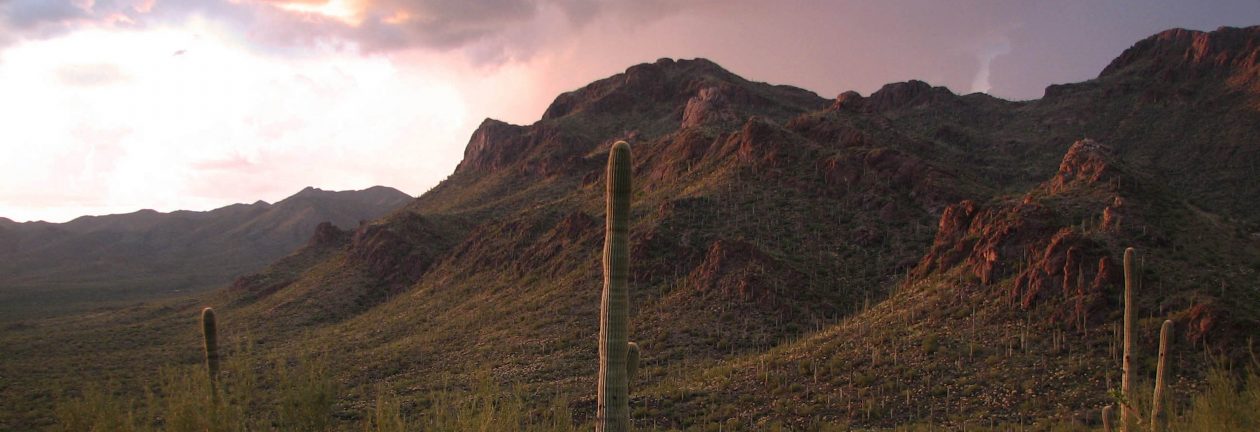Kastraki, Greece
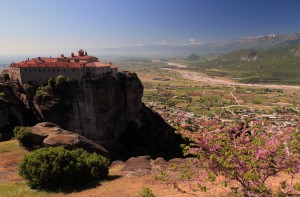
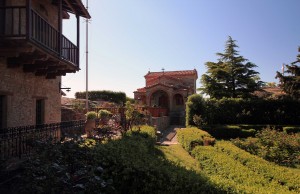
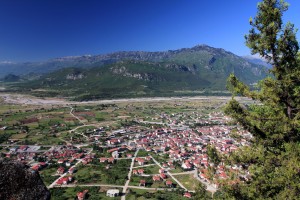
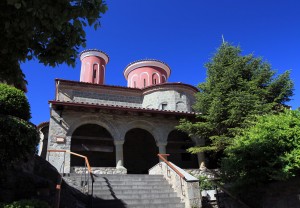
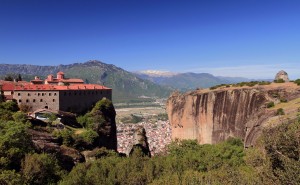
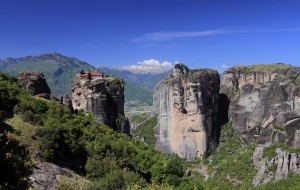
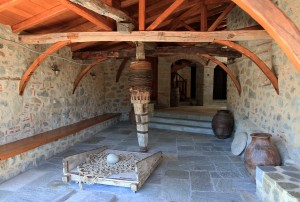
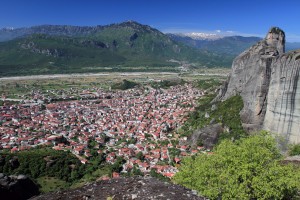
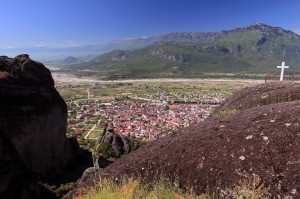
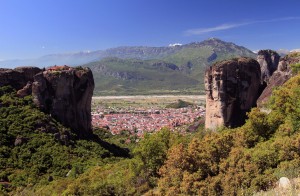
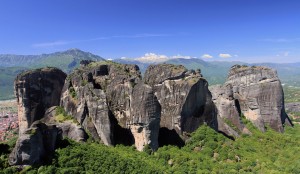
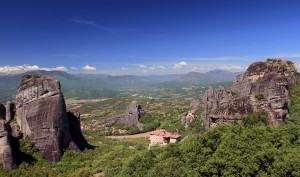
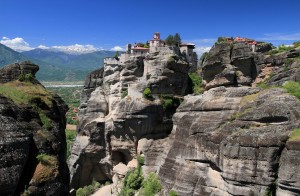
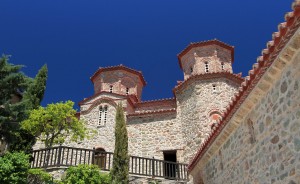
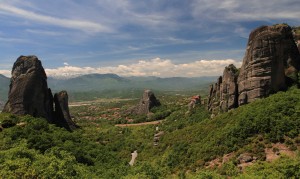
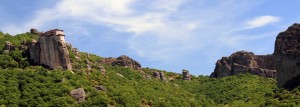
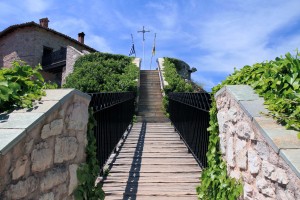
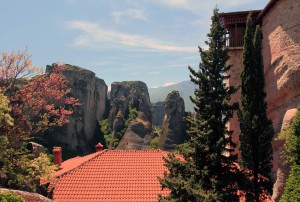
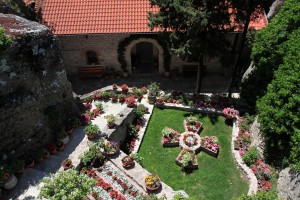
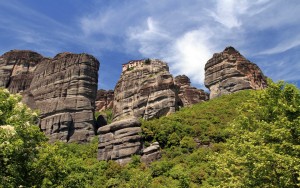
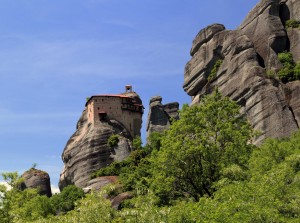
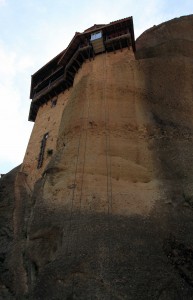
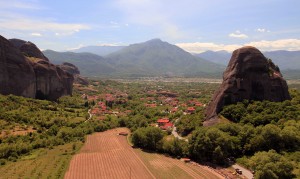
My intention was to wake up at 06:00 and get an early start hiking up to the monasteries during sunrise; however, I slept in (BIG FUCKING SURPRISE!) and did not wake up until 08:15 (and, even then, it was a struggle to get out of bed). I then showered, dressed, got ready, and walked out of the hotel to the nearby mini market (which is where the local bus stops at in its route through the towns and to the monasteries); while standing there, waiting for the bus to come, the nice old lady who runs the mini market brought me a chair to sit on (I later repaid her kindness by shopping at her store). At 09:20, the bus arrived, I got on, paid the fate, and rode the bus all the way to the last stop: Agios Stefanos (“St. Stephen’s”) Monastery. Once at the monastery, I walked across a small bridge and entered right inside (at the next monastery, I found out that this was wrong and I should’ve purchased a ticket, but, in my defense, no one was manning the entrance and I did not see any signs) and started exploring the monastic complex, which was crowded with children on a field trip. Inside, I visited a small museum with artifacts from the monastery, the terrace, and the church on site (a small church with its insides covered in frescoes – like all the monastery churches here in Meteora). After seeing all there was to see in this monastery, I walked outside in to the clear, scorching day and followed the road to the next monastery: Agia Trias (“Holy Trinity”) Monastery or Kristatos’ hideout. I followed the path off of the road, to the monastery; first walking downhill and then having to climb up many steps to reach the monastic complex atop the giant, exposed rock. Once inside the monastery, I bought my ticket, walked around, visited the church and museum, and walked outside to the terrace, where I walked around on the exposed rock and was treated to some outstanding views of the surrounding area. Then, after seeing all that was open to the public, I exited the monastery and walked back to the road. I then followed the road all the way to Varlaam Monastery; I stopped many times along the road and walked to all the viewing areas to take a great many photographs before I reached the monastery. I crossed a bridge, walked up all the steps leading in to the monastery, entered inside, bought my ticket, and explored the complex; this monastery was founded during the mid-fourteenth-century AD (it is the second oldest monastery at Meteora – behind the Great Meteoro Monastery in age) and was currently undergoing some rebuilding and expansion (in two years it will probably look very nice). Inside, I explored the multiple levels and the church inside, as well as a room displaying a large wine barrel. Once done, I exited the monastery, walked down the multitude of steps, crossed the bridge, and made my way back to the road. Next, I walked to Roussanou (also known as “St. Barbara’s”) Nunnery (I would’ve paid a visit to Great Meteoro Monastery next, but it was closed today). I followed the road downhill to the nunnery and reached the entrance around 13:30. I climbed up the path and crossed two bridges before entering inside and buying my ticket. Once inside, I walked around the complex, looked at the old artwork on display in their museum room, and visited the church. After exploring the complex, I exited the monastery and followed the road down to Agios Nikolaos Anapafsas (“St. Nicholas of Anapafsas”) Monastery. Upon reaching the monastery, I walked uphill on many steps before entering inside and buying my ticket. I then explored the complex, visiting the church, common area, and terrace (which had great views of Kastraki and ruins of past monasteries still visible on top of other rock pinnacles) before returning outside.
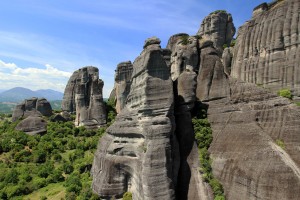
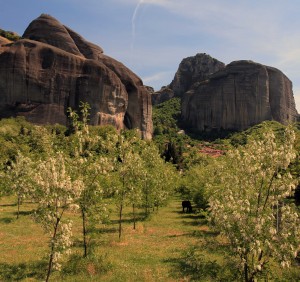
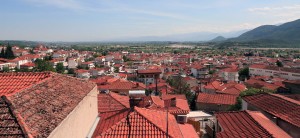
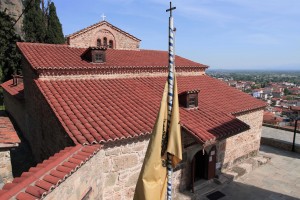
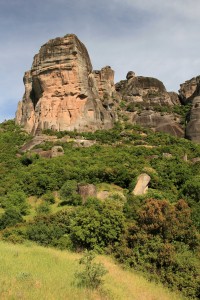
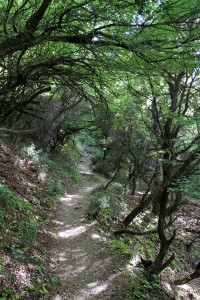
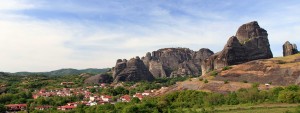
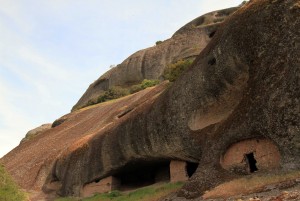
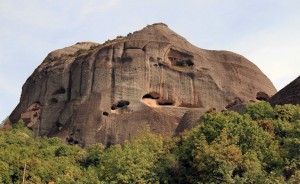
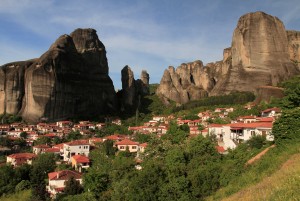
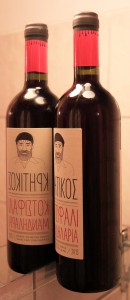
Next (at about 15:00), I walked to the town center of Kastraki to look around; while walking around in the town, I stopped to pet a friendly puppy and he took an instant liking to me, following me all the way to the central square before another dog threatened him with barks, discouraging him from continuing on and entering in to this other dog’s claimed territory (I was relieved since I didn’t want him to stray too far from home – he did have a collar). After walking around Kastraki, I continued on to the town of Kalambaka and entered in to the town center to use one of the ATMs found there (Kastraki doesn’t have any ATMs); now, with a replenished wallet, I stopped at a supermarket and bought some much needed water and fruit juice. Then, I walked to the Byzantic Church, entered inside, paid for my ticket, and then walked around the inside of this old Byzantine church, looking at all the frescoes covering its walls. After touring the church, I walked back outside, finished my juice and water, and then hiked the path up to Agia Trias Monastery just because I wanted to see the views along the trail. I hiked between the massive rock pinnacles and through some woods before making it up the trail between the monastery and the road. I then hiked back down and walked back to Kastraki. On the way back in to town, I took another road to visit the Panagia Chapel and the nearby hermit dwellings in alcoves on the sides of the rock pinnacles (I could not enter inside any of these, but it made for interesting viewing). I then followed the road across Marmaro rock and walked back in to the center of Kastraki. I then stopped at the mini market where the local bus stops, bought a bottle of water and a bottle of wine, and returned to my hotel (just after 18:00), where I drank water, showered, and redressed. Next, I walked back to the town center and stopped at a restaurant to eat dinner. For supper, I had stuffed vine leaves, Moussaka, chamomile tea, water, Greek yogurt with honey, and Greek coffee (basically, it’s Turkish coffee); in addition, since I was eating so much for just one person, the restaurant staff gave me a complimentary piece of vanilla cake with coconut shavings, three slices of apple, and a shot of local liquor (they obviously wanted a big tip and I gave it to them). After dinner, I walked back to the hotel, paid for the two nights I was staying there, and entered inside my room. I then drank the bottle of Cretan dry red wine that I had bought earlier and it tasted of raspberries and other red berries. I ended up staying awake rather late (wasting time on the internet) and did not go to sleep until after 03:00.
